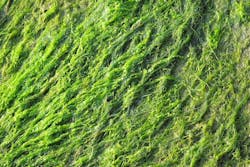What is Total Phosphorus?
About the author:
Cristina Tuser is associate editor for WWD. Tuser can be reached at [email protected]
Total phosphorus (TP) is a measure of all phosphorus found in a sample, whether that phosphorus is dissolved or particulate. This is commonly used when sampling in wastewater treatment, and is notably used to determine the health of waterways throughout the U.S.
Phosphorus is found in numerous compound forms, such as the phosphate ion (PO43-), located in water, soil and sediments. Phosphates can also be in inorganic form (orthophosphates and polyphosphates), or organic form (organically-bound phosphates).
According to the U.S. EPA, there are many sources of phosphorus, including: soil and rocks, wastewater treatment plants, runoff from fertilized lawns and cropland, failing septic systems, runoff from animal manure storage areas, disturbed land areas, drained wetlands, water treatment, and commercial cleaning preparations.
How is Phosphorus Measured?
There are a few ways to measure phosphorus, according to the U.S. EPA: The total orthophosphate test, the total phosphorus test, and the dissolved phosphorus test.
The Total Phosphorus test
Total phosphorus is measured by first digesting the sample to convert all the other forms to orthophosphate, then the orthophosphate is measured by the ascorbic acid method.
The test measures both dissolved and suspended orthophosphate as the sample is not filtered.
A total phosphorus test measures all the forms of phosphorus in the sample: orthophosphate, condensed phosphate, and organic phosphate.
The Total Orthophosphate Test
This test mostly measures orthophosphate and because the sample is not filtered, the procedure measures both dissolved and suspended orthophosphate.
What Does a High Level of Phosphorus Mean in Water?
Phosphorus is a natural element found in rocks, soils and organic material, clinging to soil particles. Phosphorus is an essential nutrient for aquatic life and in water, and exists in either a particulate phase or a dissolved phase.
Rainfall can cause varying amounts of phosphates to wash from soils into nearby waterways, spurring the growth of phytoplankton and aquatic plants. This may cause an increase in the fish population and improve water quality.
If an excess of phosphate enters the waterway, algae and aquatic plants will grow to a point where they impact the waterway by using up large amounts of oxygen, which is known as eutrophication.
How Can Phosphorus be Removed?
There are two main methods to remove phosphorus: chemical treatment to remove phosphorus and enhanced biological phosphorus removal (EBPR).
Chemical Treatment for Total Phosphorus
Chemical phosphorus removal is a process where “the metal phosphate precipitate settles with the sludge and the phosphorus is removed when sludge is wasted,” according to the Wisconsin Department of Natural Resources.
Enhanced Biological Phosphorus Removal
"When using enhanced biological phosphorus removal (EBPR), the phosphorus accumulating organisms (PAO) settle with the sludge and are removed during sludge wasting,” adds the Wisconsin DNR. “Phosphorus that does not settle with the sludge will be discharged in the effluent.”
What is a Good Level of Phosphorus in Water?
To control eutrophication, EPA established a recommended limit of 0.05 mg/L for total phosphates in streams that enter lakes and 0.1 mg/L for total phosphorus in flowing waters.
